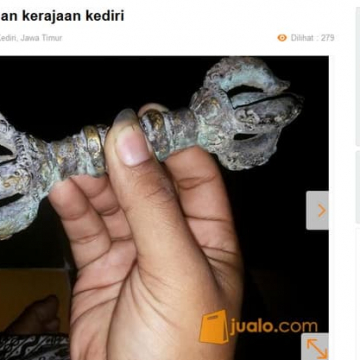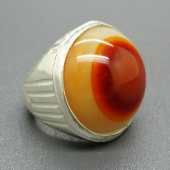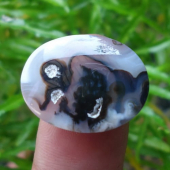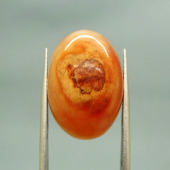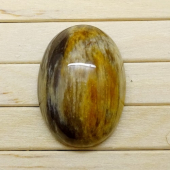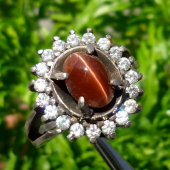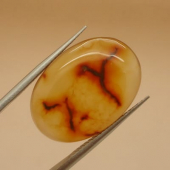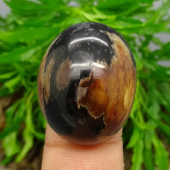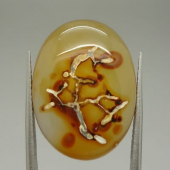Pusaka Vajra Dewa Indra Asli Kuno Bahan Perunggu
Rp 2.500.000| Kode | 8729 |
| Stok | |
| Kategori | Pusaka Terjual |
Pusaka Vajra Dewa Indra Asli Kuno Bahan Perunggu
Pusaka Vajra Dewa Indra Asli Kuno Bahan Perunggu. Vajra atau Wajra ini merupakan Pusaka Bertuah Antik dan Asli Kuno yang berbahan Perunggu Asli Kuno, Pusaka Vajra/Wajra adalah salah satu Pusaka Paling Dicari dan Barang Antik Bertuah Paling Diburu. Selain bentuknya yang unik antik Pusaka Vajra dipercaya mempunyai khasiat mistis tingkat tinggi, dengan menyimpan Pusaka Vajra pemilik Insyaallah mudah menjadi penguasa segala bidang baik dalam urusan cinta, usaha, bisnis, penangkal sihir, jabatan, politik, tender, mendatangkan bala bantuan khodam kuno berjumlah jutaan khodam serta masih banyak khasiat lainnya yang tidak cukup untuk ditulis. Dalam sejarah pusaka Vajra/wajra ini merupakan Sejata Pusaka Warisan Dewa Indra. Kami mendapatkan Pusaka Vajra ini saat berburu pusaka di kerajaan jawa timur, atas ijin Allah kami bisa menarik Pusaka Vajra dari dalam tanah yang sangat dalam. Ukuran panjang Pusaka Vajra ini 22 cm dengan MAHAR BERSAHABAT KARENA DI TOKO ONLINE JUALO MENJUAL PUSAKA VAJRA SAMA SEPERTI INI DENGAN HARGA 12 JUTA, BERIKUT FOTO BUKTI KAMI LAMPIRKAN :

Artikel Tentang Barang Antik Pusaka Vajra / Wajra yang bersumber dari Wikipedia
Wajra (Sanskerta: vajra, Devanagari: वज्र Jawa: bajra) adalah istilah yang berasal dari bahasa Sanskerta yang bemakna halilintar dan intan. Sebagai benda ritual, wajra adalah tongkat logam dengan sula ditengahnya dikelilingi banyak sula-sula lain yang melengkung ke dalam dan ujungnya menyambung bersatu dengan sula utama di tengahnya.
Wajra dipercaya melambangkan kekokohan jiwa dan kekuatan spiritual. Benda ini menjadi alat ritual untuk penerapan latihan spiritual dalam Buddhisme, Jainisme dan Hinduisme, semua adalah tradisi Dharma. Karena makna simbolisnya yang penting, wajra menyebar ke berbagai wilayah Asia lainnya seiring pengaruh spiritual dari India. Bentuk wajra digunakan sebagai alat ritual, ornamen genta, ornamen arsitektur, atau atribut arca di berbagai wilayah Asia seperti India, Nepal, Tibet, Bhutan, Siam, Kamboja, Indonesia, Myanmar, China, Korea, dan Jepang.
Wajra juga adalah salah satu lakçana (atribut) sekaligus senjata dewa Indra yang dapat menembakkan halilintar. Senjata yang serupa dengan petir dewa Zeus dalam mitologi Yunani. Senjata pemukul logam dari Jepang yang disebut yawara — juga dibuat berdasarkan wajra yang merupakan bentuk simbolis intan (benda terkeras di dunia), sekaligus halilintar atau petir (kekuatan dahsyat yang tak dapat ditahan). Tongkat pemukul gada juga ada yang bentuknya mencontoh bentuk wajra.
Mastaka wajra ditemukan pada seni arsitektur candi Hindu di Indonesia. Bentuk wajra atau ratna memahkotai candi Hindu sebagai sandingan stupa pada candi Buddha. Mastaka wajra dapat ditemukan di candi Prambanan. Mastaka wajra dalam bentuk lain dari bahan kayu atau terakota juga digunakan dalam arsitektur Pura Bali, sebagai kemuncak atap susun tumpang meru.
Wajralepa kadang dieja Bajralepa (vajralepa); yang bermakna ‘lepa intan’ yaitu bahan lepa pelapis dinding candi semacam plaster putih kekuningan untuk memperhalus dan memperindah sekaligus untuk melindungi dinding dari kerusakan. Bajralepa konon dibuat dari campuran putih telur, getah tumbuhan, kapur halus, dan lain-lain. Bekas-bekas bajralepa ditemukan di candi Sari dan candi Kalasan. Kini pelapis bajralepa telah banyak yang mengelupas.
Vajra is a Sanskrit word meaning both thunderbolt and diamond.[1] Additionally, it is a weapon which is used as a ritual object to symbolize both the properties of a diamond (indestructibility) and a thunderbolt (irresistible force).
The vajra is essentially a type of club with a ribbed spherical head. The ribs may meet in a ball-shaped top, or they may be separate and end in sharp points with which to stab. The vajra is used symbolically by the dharma traditions of Buddhism, Jainism and Hinduism, often to represent firmness of spirit and spiritual power.[2] The use of the vajra as a symbolic and ritual tool spread from India along with Indian religion and culture to other parts of Asia.
The earliest mention of the vajra is in the Rigveda, part of the four Vedas. It is described as the weapon of Indra, the god of heaven and the chief deity of the Rigvedic pantheon. Indra is described as using the vajra to kill sinners and ignorant persons.[3] The Rigveda states that the weapon was made for Indra by Tvastar, the maker of divine instruments. The associated story describes Indra using the vajra, which he held in his hand, to slay the asura Vritra, who took the form of a serpent.[4]
On account of his skill in wielding the vajra, some epithets used for Indra in the Rigveda were Vajrabhrit (bearing the vajra), Vajrivat or Vajrin (armed with the vajra), Vajradaksina (holding the vajra in his right hand), and Vajrabahu or Vajrahasta (holding the vajra in his hand). The association of the Vajra with Indra was continued with some modifications in the later Puranic literature, and in Buddhist works. Buddhaghoṣa, a major figure of Theravada Buddhism in the 5th century, identified the Bodhisattva Vajrapani with Indra.
Many later puranas describe the vajra, with the story modified from the Rigvedic original. One major addition involves the role of the Sage Dadhichi. According to one account, Indra, the king of the deva was once driven out of devaloka by an asura named Vritra. The asura was the recipient of a boon whereby he could not be killed by any weapon that was known till the date of his receiving the boon and additionally that no weapon made of wood or metal could harm him.[6]) Indra, who had lost all hope of recovering his kingdom was said to have approached Shiva who could not help him. Indra along with Shiva and Brahma went to seek the aid of Vishnu. Vishnu revealed to Indra that only the weapon made from the bones of Dadhichi would defeat Vritra.[6] Indra and the other deva therefore approached the sage, whom Indra had once beheaded, and asked him for his aid in defeating Vritra. Dadhichi acceded to the deva’s request but said that he wished that he had time to go on a pilgrimage to all the holy rivers before he gave up his life for them.[7] Indra then brought together all the waters of the holy rivers to Naimisha Forest,[7] thereby allowing the sage to have his wish fulfilled without a further loss of time. Dadhichi is then said to have given up his life by the art of yoga after which the gods fashioned the vajrayudha from his spine. This weapon was then used to defeat the asura, allowing Indra to reclaim his place as the king of devaloka.
Another version of the story exists where Dadhichi was asked to safeguard the weapons of the gods as they were unable to match the arcane arts being employed by the asura to obtain them. Dadhichi is said to have kept at the task for a very long time and finally tiring of the job, he is said to have dissolved the weapons in sacred water which he drank.[8]) The deva returned a long time later and asked him to return their weapons so that they might defeat the asura, headed by Vritra, once and for all. Dadhichi however told them of what he had done and informed them that their weapons were now a part of his bones. However, Dadhichi, realising that his bones were the only way by which the deva could defeat the asura willingly gave his life in a pit of mystical flames he summoned with the power of his austerities.[8] Brahma is then said to have fashioned a large number of weapons from Dadhichi’s bones, including the vajrayudha, which was fashioned from his spine. The deva are then said to have defeated the asura using the weapons thus created.
There have also been instances where the war god Skanda (Kartikeya) is described as holding a vajra.[9] Skanda is also the name of a bodhisattva in Mahayana Buddhism who wields a vajra.
In Buddhism the vajra is the symbol of Vajrayana, one of the three major branches of Buddhism. Vajrayana is translated as “Thunderbolt Way”[10] or “Diamond Way” and can imply the thunderbolt experience of Buddhist enlightenment or bodhi. It also implies indestructibility,[11] just as diamonds are harder than other gemstones.
In Tantric Buddhism (Vajrayana) the vajra and ghanta (bell) are used in many rites by a lama or any Vajrayana practitioner of sadhana. The vajra is a male polysemic symbol that represents many things for the tantrika. The vajra is representative of upaya (skilful means) whereas its companion tool, the bell which is a female symbol, denotes prajna (wisdom). Some deities are shown holding each the vajra and bell in separate hands, symbolizing the union of the forces of compassion and wisdom, respectively.
Vajrasattva holds the vajra in his right hand and a bell in his left hand.
In the tantric traditions of Buddhism, the vajra is a symbol for the nature of reality, or sunyata, indicating endless creativity, potency, and skillful activity. The term is employed extensively in tantric literature: the term for the spiritual teacher is the vajracharya; one of the five dhyani buddhas is vajrasattva, and so on. The practice of prefixing terms, names, places, and so on by vajra represents the conscious attempt to recognize the transcendental aspect of all phenomena; it became part of the process of “sacramentalizing” the activities of the spiritual practitioner and encouraged him to engage all his psychophysical energies in the spiritual life.
An instrument symbolizing vajra is also extensively used in the rituals of the tantra. It consists of a spherical central section, with two symmetrical sets of five prongs, which arc out from lotus blooms on either side of the sphere and come to a point at two points equidistant from the centre, thus giving it the appearance of a “diamond sceptre”, which is how the term is sometimes translated.
Various figures in Tantric iconography are represented holding or wielding the vajra. Three of the most famous of these are Vajrasattva,[2] Vajrapani, and Padmasambhava. Vajrasattva (lit. vajra-being) holds the vajra, in his right hand, to his heart. The figure of the Wrathful Vajrapani (lit. vajra in the hand) brandishes the vajra, in his right hand, above his head. Padmasambhava holds the vajra above his right knee in his right hand.
The vajra is made up of several parts. In the center is a sphere which represents Sunyata,[11] the primordial nature of the universe, the underlying unity of all things. Emerging from the sphere are two eight petaled lotus flowers.[12] One represents the phenomenal world (or in Buddhist terms Samsara), the other represents the noumenal world (Nirvana). This is one of the fundamental dichotomies which are perceived by the unenlightened. The physical manifestation of the vajra, also called dorje in this context, is the male organ.
Arranged equally around the mouth of the lotus are two, four, or eight creatures which are called makara. These are mythological half-fish, half-crocodile creatures[2] made up of two or more animals, often representing the union of opposites, (or a harmonisation of qualities that transcend our usual experience). From the mouths of the makara come tongues which come together in a point.[2]
The five-pronged vajra (with four makara, plus a central prong) is the most commonly seen vajra. There is an elaborate system of correspondences between the five elements of the noumenal side of the vajra, and the phenomenal side. One important correspondence is between the five “poisons” with the five wisdoms. The five poisons are the mental states that obscure the original purity of a being’s mind, while the five wisdoms are the five most important aspects of the enlightened mind. Each of the five wisdoms is also associated with a Buddha figure. (see also Five Wisdom Buddhas)
The following are the five poisons and the analogous five wisdoms with their associated Buddha figures.
Hubungi Kami di :
BlackBerry: 2B1 88008
Phone :+6285 2939 88885
Sms : +6285 2939 88885
WhatsApp : +6285 2939 88885
Line : pusakadunia
WeChat : pusakadunia
Instagram : pusakadunia
8729
Pusaka Vajra Dewa Indra Asli Kuno Bahan Perunggu
| Berat | 2 kg |
| Kondisi | Baru |
| Dilihat | 3.015 kali |
Mustika Mata Merah Raja Khodam Mustika Mata Merah Raja Khodam merupakan mustika bertuah dengan bentuk pamor Mata Merah yang ganas dan sangat keramat. Mustika ii termasuk salah satu mustika yang jarang sekali didapatkan. Mustika yang satu ini sangat bagus untuk dijadikan koleksi maupun pusaka andalan dalam perlindungan tingkat tinggi. Khasiat Manfaat Bertuah Mustika Tersebut Insya… selengkapnya
Rp 575.000Mustika Kyai Sengkelat Nama daripada Produk ini. Mustika Kyai Sengkelat berkhasiat Insya Allah untuk memudahkan pemilik menjadi penguasa, memuluskan meraih kepemimpinan swasta/politik/pemerintahan/militer, kelancaran meraih jabatan sesuai harapan, kelancaran rejeki mengalir deras tiada kekurangan, mudah mencapai kekayaan berlimpah, kewibawaan bagai raja, dicintai/disayangi bawahan maupun atasan. Produk Jenis ini bernama Batu Akik Pamor Kyai Sengkelat Produk jenis… selengkapnya
Rp 350.000Tombak Kuntul Nglangak Yang Asli merupakan salah satu pusaka tosan aji yang paling langka dan sangat sulit sekali untuk mendapatkan pusaka yang satu ini, pusaka ini memiliki model bentuk yang sangat elegan dan unik sekali lain daripada pusaka tosan aji lainnya, pusaka ini merupakan salah satu pusaka yang banyak sekali diburu oleh banyak orang karena… selengkapnya
Rp 650.000Batu Mustika Malaikat Subuh Batu Mustika Malaikat Subuh merupakan mustika bertuah yang memiliki warna orange yang indah serta elegan sekali. Pamor mustika ini juga terkesan unik sekali dengan posisi berada di tengah mustika. Mustika ini sangat jarang sekali diapatkan dan memang jarang sekali ada. batu mustika ini juga sangat cocok jika dijadikan cincin maupun liontin…. selengkapnya
Rp 350.000Nama Pusaka : Keris Kyai Sengkelat Dapur / Bentuk : Sengkelat Pamor / Lambang / Filosofi : Kulit Semongko Nyanak Tangguh / Era Pembuatan / Estimasi : Kerajaan Mataram Tahun Pembuatan : Abad Ke 15 Model Bilah Pusaka : Luk 13 Panjang Bilah Keris : 32,5 CM Panjang Seluruh Keris : 39 CM Asal Usul… selengkapnya
*Harga Hubungi CSMustika Raja Regul Khusus Mancing merupakan batu mustika binatang sero regul jawa yang sangat unik dan mustika hewan sero regul atau biasa juga disebut mustika berang berang ataupun mustika linsang air memang sudah terkenal dan diketahui oleh kalayak ramai bahwa mustika tersebut identik dengan mustika mancing paling ampuh dan diburu banyak orang, dapat juga guna… selengkapnya
Rp 275.000Mustika Mata Kucing Merah Menyala adalah nama Produk ini. Khasiat Manfaat Bertuah Mustika Mata Kucing Merah Menyala Insya Allah untuk Kewibawaan Ampuh, Kekuatan Pemikat Tanpa Tanding, Pengasihan Ampuh, Kesuksesan Karir, Kelancaran Bisnis, Pendinding Tubuh, Tolak Balak Sakti, Kharisma Disegani Siapapun, Meningkatkan Mental dan Menambah Keberanian, Menghilangkan Rasa Grogi, Mudah Membuat Orang Percaya. Produk Jenis ini… selengkapnya
Rp 450.000Nama Produk ini Mustika Birahi Asmaragama. Mustika Birahi Asmaragama ini Khasiat / Manfaat Insya Allah untuk menjadikan pandai dalam urusan asmara cinta, melancarkan bujuk rayuan maut, memikat banyak pasangan, perkasa urusan bercinta, memudahkan memikat hati siapapun sesuai keinginan, membangkitkan kekuatan raja pengasihan, memudahkan mempengaruhi sukma seseorang, meluluhkan pasangan agar menjadi tunduk dan penurut, memudahkan memikat… selengkapnya
Rp 200.000Mustika Raden Kian Santang Mustika Raden Kian Santang ialah mustika yang berasal dari Jawa Barat. Mustika memiliki perpaduan warna hitam dan coklat yang sangat menawan sehingga menjadi incaran banyak orang. Khasiat Manfaat Bertuah Mustika Raden Kian Santang Insya Allah untuk kekebalan tubuh agar terhindar dari serangan serangan musuh, kekebalan dari santet, kebal dari gangguan jin,… selengkapnya
Rp 300.000Rajah Batu Mustika Nama daripada Produk ini. Rajah Batu Mustika berkhasiat Insya Allah untuk memudahkan pemilik membuka indera keenam, melihat alam gaib, menjadi penguasa jin, ditakuti segala macam jin dan mempunyai banyak pengikut khodam yang patuh. Produk Jenis ini bernama Batu AKik Berajah. Produk jenis ini ditemukan Tahun 1548. Tingkat Kekerasan 6.5-7 Mohs. Ukuran :… selengkapnya
Rp 250.000
